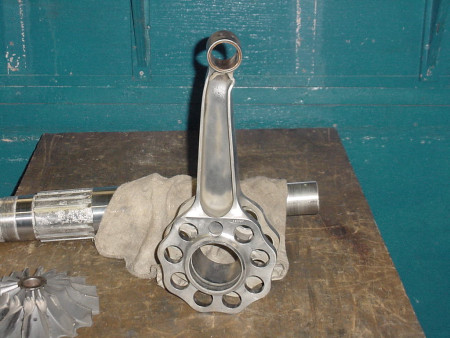 By Brendan Odell, CAA Airworthiness Inspector
By Brendan Odell, CAA Airworthiness Inspector
Recent occurrences linked to the maintenance and operation of low-use radial engines in New Zealand have generated an industry discussion about how best to keep such engines functioning safely.
Radial engines are often subject to specific problems not seen in other types of piston engines. As with almost all aircraft powerplants designed pre-war, they weren’t designed with low use in mind.
They typically have no calendar life limits on overhaul, and most are in the hands of operators who use them for recreational flying or display flying. There are still a few in ‘hire and reward’ service but even these engines can be subject to extended periods of idleness due to seasonal usage etc.
While the preservation of these engines before standing idle is important, it’s vitally important that operators understand the implications of a poorly executed restoration process when returning to operation.
A very commonly known mitigating action to bring ‘idle’ radial engines back to operation is pre-oiling.
The specific procedure for pre-oiling an engine will be contained in the manufacturer’s maintenance manual.
What does pre-oiling do?
Pre-oiling is less about corrosion inhibition and more about ensuring that oil is in all the parts of the engine that it needs to be when the engine starts.
It also ensures that oil which, over time, has migrated into the oil sump, lower crankcase, lower cylinders, intake pipes and exhausts is removed. This reduces the risk of hydraulic lock.
American and British radial engines don’t commonly incorporate drains on the lower intake pipes – unlike Russian engines – and as such need to be treated as if the potential for hydraulic lock always exists.
Pre-oiling:

Crankpin oil starvation as a result of not pre-oiling. Photo courtesy of Logan Simmons, Chief Inspector, Covington Aircraft Engines
- puts a film of warm oil on to critical parts of the engine (main bearings as an example). Once the engine is pre-oiled, depending on the type, it will be able to hold 15-20 psi of oil pressure on its own while being cranked with the spark plugs out.
- clears air bubbles from the engine oil system, any time the oil system has been disturbed. There are a few areas where it’s critical to clear air from the system before the first run. These are addressed through the pre-oiling process. When running an engine with a hydromatic propeller when the oil system has been disturbed, after pre-oiling, it is good practice to cycle the propeller slowly on the first run.
(Any air left in the propeller dome is forced down the prop shaft and its first chance of escape is through the master rod bearing to crankshaft journal clearance. This can cause master rod bearing damage.)
- clears accumulated oil from the lower crankcase, rocker and main sumps (as applicable) as the main sump is drained during pre-oiling.
(This accumulated oil can cause the sump to become ‘overloaded’, to use a Pratt & Witney term. The main scavenge pump may not adequately scavenge this accumulated oil on start-up, creating excessive crankcase pressure.
Should this occur, the hydraulic lock or partial hydraulic lock of the upper cylinders may occur. These pistons have additional holes around the oil control rings to aid upper cylinder lubrication, which will force oil into the upper cylinders.
As the excessive and pressurised crankcase oil is pushed past the dry compression and oil control rings, from below the piston, it accumulates in the combustion chamber. Then, as the piston comes up on the compression stroke, it is forced to compress the incompressible oil. The result? A bent link rod, or possibly a cylinder (or just the head) pushed off the engine.)
- clears accumulated oil from the lower cylinders, intake pipes and exhausts (as the spark plugs are removed and the engine is cranked during pre-oiling). Some larger radial engines, such as the Pratt & Whitney R-1830, actually incorporate in most installations, a drilled hole in the exhaust collector ring to allow such excess oil that bypasses the piston rings and exhaust valves (and which subsequently pools in the exhaust collector ring) to drip out.
What does industry say?
One of the world’s leading overhaulers of radial engines until recently, US-based Precision Engines, had the following to say in their Radial Engine Recommendations document:
“Overhauled engines and engines that have been inactive must be pre-oiled prior to start. The instructions contained within the engine manufacturer’s manuals are the only acceptable method of pre-oiling.”
Oil flow and presence are paramount in radial engines. Where journal bearings are used in the crankshaft main bearing positions, they operate as fully hydrodynamic bearings.
The oil serves to establish a film preventing metal-to-metal contact between the journal and bearing, and to provide cooling. Therefore, in a radial engine where each bank of cylinders has all the cylinders in the same plane and transmits power through a single master rod bearing to the crankshaft, the master rod bearing is subjected to high loading. It also absorbs the shock and vibration from the cylinders, thus the protection provided by lubrication is essential.
For example, a Wright R-1820 engine running at 2500 RPM produces loads of up to 37,000 lb on the master rod bearing and loads of between 31,000 lb and 37,000 lb on the crankpin bearing!
Bear in mind then that starting an engine which has been at rest for a long time without pre-oiling may see the thin cushion of lubrication between the journal and the bearing missing altogether. The bearing may be thus damaged during start, only to expose it to the very large loads imposed upon it during flight, shortly after.
This damage may not be immediately evident, and the corresponding engine damage may only cause the ‘classic’ radial engine failure of ‘main bearing failure’ up to 200 hours down the line. An old hand on radials explained it to me like this, “the engine is like an elephant. It remembers and does not forget”!
Checking for hydraulic lock

Master rod which has failed through hydraulicking. Photo courtesy of Logan Simmons, Chief Inspector, Covington Aircraft Engines.
Remember the purpose of pulling the prop through before start is not to clear the cylinders. It’s done simply to detect if a hydraulic lock is present!
Engines incorporating combination inertia-direct cranking starters, air or cartridge starters should always be rotated through by hand before start, to detect hydraulic lock. These starters do not incorporate a clutch to protect the engine in the event of a hydraulic lock.
While rotating the engine through by hand is the option of choice if a cartridge, air or combination inertia direct-cranking starter is installed, this needs to be accomplished with care. Applying force via the propeller to a hydraulicked piston can generate massive forces on the engine components, even on geared engines.
If forced, the consequences can be disastrous.
In the 1990s, Doug Rozendaal in the USA calculated what these effects might be. He used a Pratt & Whitney R-1340 to eliminate gearing complications.
Computing the volume of the combustion chamber at top dead centre (TDC), Doug’s calculations show that slightly more than a ¾ pint of oil would cause a hydraulic lock.
Applying 50 pounds of hand force at the prop tip would result in a 900-pound force being generated in the cylinder at 90 degrees before top dead centre (BTDC). This would increase to about 11,000 pounds force at 10 degrees BTDC.
Direct cranking starters incorporating a suitable clutch mechanism, pre-set to slip when excessive resistance is encountered, can be used to motor the engine through safely. The clutch setting is thoroughly tested at overhaul and will slip well in advance of any damage occurring. Typically, this is a wet clutch that is bench set at 200-240lb.ft, depending on type and model of starter installed.
Typical hydraulic lock

Oil scavenging
Radial engines use a full pressure oil system, with the oil being collected in a small sump at the bottom of the engine where it is picked up by the scavenge section of the oil pump and returned to the main oil tank.
Most manufacturers incorporate a ‘cooling down’ period before shutdown. This is commonly achieved at a slightly higher RPM than idle, to aid the scavenge of oil from the sump(s). Some engines incorporate a rocker sump in addition to the main sump.
Remember, under normal circumstances, a substantial amount of oil still remains in the sump of the engine after shutdown. For example, about 2½ to 3 US gallons of oil can remain in the sump of a Wright R-1820 Cyclone, even after using a proper period of scavenging time.
The effect of static full feather checks on engines equipped with fully feathering hydromatic propellers is to add a significant quantity of oil to the engine sump, every time a full feather cycle is completed.
Routine checks, such as those required by Boeing AOL 3-014 on Douglas DC-3 aircraft, should be done either with the engines running (followed by the recommended scavenge period before shutdown). If completed statically, one should incorporate a procedure to drain the engine sump of accumulated oil before attempting the next start.
The acidic effects of old oil
When engine oil remains in an engine for extended periods of time with suspended contaminants in it, the acidity of the old engine oil can affect engine components, specifically bearings.
Copper-lead bearings are likely to suffer in this way, with the acid attacking the lead content of the alloy. This weakens the structure, causing it to collapse under load. The silver-lead indium bearing, which was developed by Pratt & Whitney for the R-1830 in the mid-1930’s can be similarly affected. Due to the indium component, the bearing material is less susceptible to corrosion. However, continued long-term exposure to acidic oil will affect the main bearing, reducing its performance over time, and eventually lead to failure.
Pratt & Whitney, for example, recommend the following regime in their SB 1183:
“It is recommended that reciprocating engine lubricating oil be changed after 200 - 300 hours of normal operation. Under conditions of severe operation, involving dust, sand, or coral, lubricating oils should be changed at 100 – 150-hour intervals.”
Precision Engines in the USA, as an experienced radial engine overhauler, go even a little further in their recommendation:
“Corrosive acids will accumulate within the oil system. Low-use operators need to change oil every season to avoid engine damage. Continuous use operators need to change oil every 150 hours of operation”.
Returning stored engines to service
Where engines have been properly inhibited for an extended period and are then returned to service, consideration should be given to those engines that have been operating on straight mineral oil for several hundred hours and have not run on ashless dispersant oil. De-inhibiting should be in accordance with the manufacturer’s instructions.
Selecting the correct type of oil should be done by consulting the engine manufacturer’s data in the first instance – this may be contained in a service bulletin (as for Pratt & Whitney radial engines) or specified in the relevant engine maintenance manual.
The change to ashless dispersant oil should be made with a degree of caution, because the cleaning action of some ashless dispersant oils will loosen sludge deposits and carbon, causing plugged oil passages.
When an engine has been operating on straight mineral oil, and is known to be in excessively dirty condition, the switch to ashless dispersant oil should be made giving consideration to performing more regular oil filter checks and oil changes, if necessary. This may alleviate the potential occurrence of blocked oil filters.
